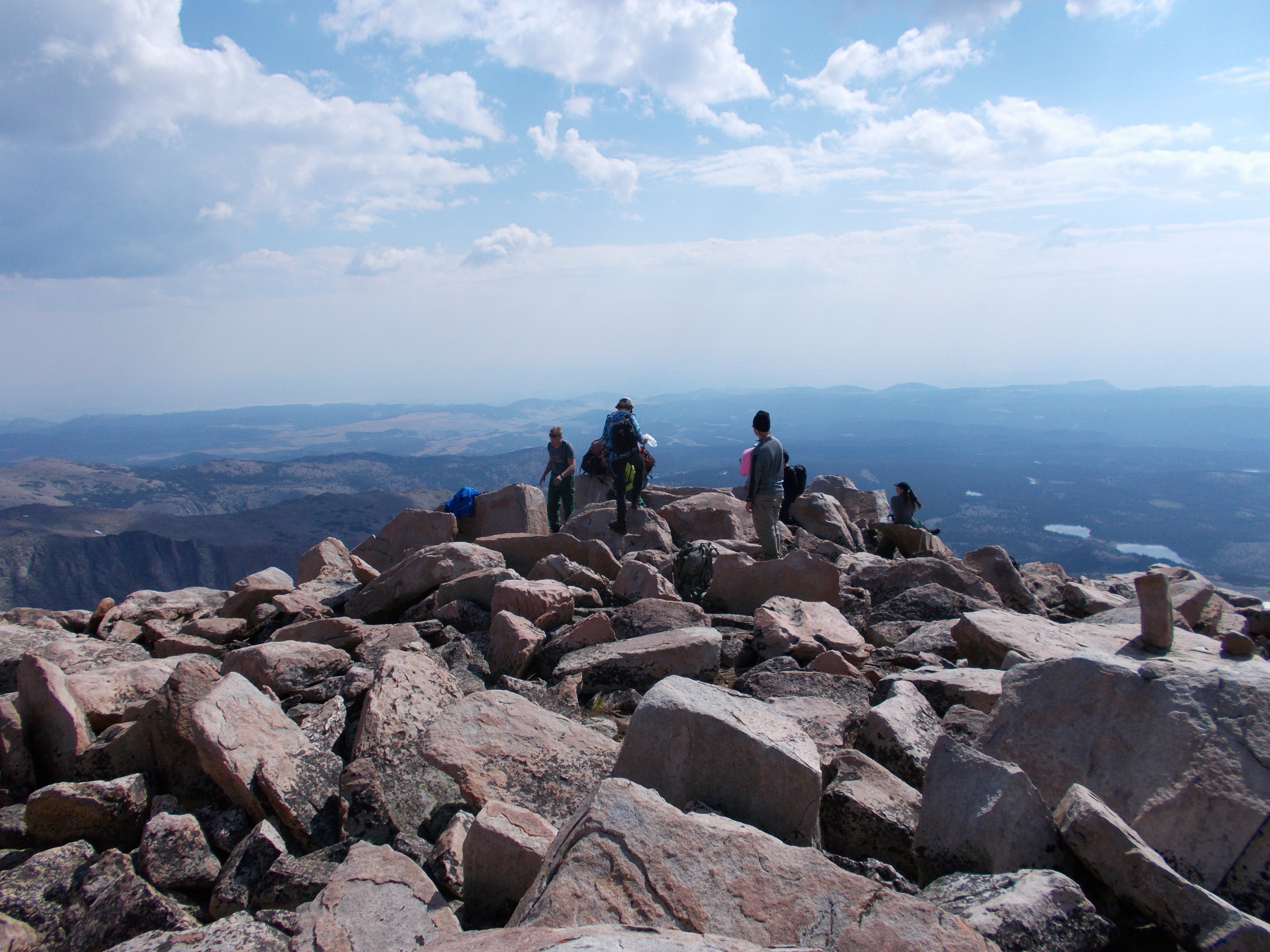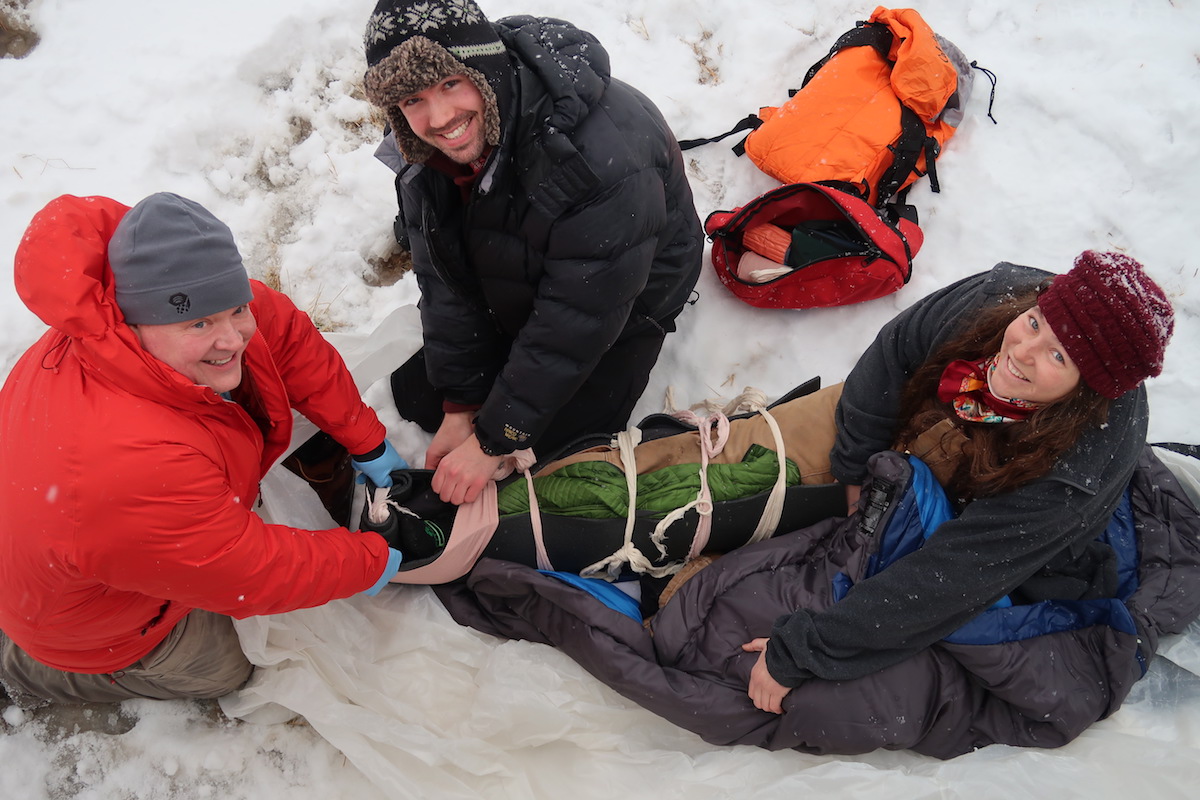
Hiking to Head Injury
During the summer of 2017, when I was 14 years old, I took part in a 21-day NOLS backpacking course in the Bighorn Mountains of Wyoming. Just halfway through the course, I watched what (at the time) I considered to be an incredible feat of medicine. Another student on my course tripped and fell while walking across a burned-out section of forest and—under the heavy weight of his pack—hit his head on a rock. In the days that followed, I watched my two incredible instructors treat a possible concussion.
The injury turned out to be relatively minor, and my instructors, in coordination with medical direction from NOLS, ensured the student was capable and healthy enough to continue the course. But I, 14 years old and without the slightest medical training, was astounded by the fact that my instructors didn’t simply ship the student off to a hospital.
In my expedition course evaluation, one of my instructors said that I might enjoy a Wilderness First Aid class.

Almost immediately afterward, I signed up for a NOLS Wilderness First Aid (WFA) class.
A Passion for Wilderness Medicine is Born
No, the indoor classroom of a New York City REI was not where I expected my learning to begin. But you’d be surprised at how much you can learn about wilderness medicine in a city! For two-lesson-packed-days, I learned the basics of patient assessment and emergency care alongside outdoor enthusiasts, nature therapists, wilderness guides, and more.
I fell in love with the thrill that accompanied analyzing patient conditions and scrutinizing signs and symptoms. The fast-paced, dynamic environments that envelope emergency operations became something I yearned to participate in, rather than something I feared.
One of the most important things I learned from that course was not to fear that instability, but to embrace it. There is a certain feeling that accompanies caring for a patient in the wilderness, a feeling that of working with the environment rather than against it.
There’s something uniquely special to me about wilderness medicine. A significant aspect of wilderness medicine that differentiates it from urban medicine is a lack of control; in the backcountry, every medical emergency is a constantly unstable situation.
That two-day WFA class was the tip of the iceberg.
The following summer, at age 15, I earned my Wilderness First Responder (WFR) certification through NOLS.

Over the course of 10 days, I practiced my newfound wilderness medicine skills alongside professionals ranging from an avalanche expert to a middle school science teacher, a Navy medevac pilot, to a paramedic earning CME credits, a head of a college outing club to several individuals preparing to embark on outdoor guiding careers, as well as outdoor enthusiasts or those simply looking for a career change.
Through practical scenarios and life-like “emergencies,” that course provided me with exceptional leadership, communication, and teamwork skills that have continued to prove to be invaluable well afterwards.
On one of the last days of the course, a large group of us responded to a mock mass-casualty incident. Numerous “patients” were scattered in and around a small river, some unresponsive. For the next two and a half hours, we worked tirelessly to extricate and evacuate patients with impaled objects, spinal injuries, deteriorating levels of responsiveness, and life-threatening ailments.
Watching everyone implement all the skills they had learned and seeing a team composed of people who, just a week prior, had never worked together was—simply put—stunning. I was in awe of the amount we had learned and our ability to work as a team to deploy our skills. Many of the students had little-to-no previous medical training, yet there they were, taking care of patients, allocating resources, and taking control of the situation.
Yes, we learned the technical skills. We learned how to open an airway, manage infection, and conduct a focused spine assessment. But more importantly, we learned to accept the dynamic circumstances that surround wilderness emergencies and thrive within those constraints. In one scenario, my partner and I splinted a fractured lower arm using nothing but a sturdy tree branch, bunched-up t-shirts, and triangular bandages.
Following those transformative 10 days, I emerged with a deep desire to continue to learn, expand my abilities, and care for people on what may very well be the worst day of their life.
The following summer, at 16 years old, I enrolled in urban EMT training. I gained another array of technical skills, and became even more confident in my decision making and medical knowledge. However, I found myself considering my wilderness medicine training every time I stabilized and treated a patient.

NOLS in Action
Thanks to NOLS, I had become so proficient in working with minimal resources and no backup that an ambulance full of equipment and a fleet of first responders felt almost like cheating. And so, when thrown into a situation that required improvisation, I was already prepared.
Following my course, I had renewed confidence in stressful situations. The challenges of wilderness medicine taught me to think methodically about every problem I approach, whether in the woods or out. As the co-president of my school’s Outing Club, I get to expose others to the great outdoors. I have the opportunity to pass on numerous NOLS lessons: wilderness medicine, risk management, Leave No Trace, and more.
Wilderness medicine is composed of unforgiving working environments, extremely limited equipment, and a seemingly symbiotic connection between the patient and the rescuer. Deeply reinforcing my passion for the outdoors, wilderness medicine gave me renewed confidence to care for myself and others, and it drove me to embrace nature with my whole self.
Nature is one of the most stunning but also one of the most unforgiving work environments; in turn, it is both an astounding privilege and honor as well as an immense responsibility to protect others within it. With NOLS, I earned both that privilege and responsibility.
Do you also want to expand your opportunities in and appreciation for the outdoors? Check out our Wilderness Medicine education options! Check out our Backpacking Trips and other expeditions!
- Wilderness First Responder
- First Aid
- Skills
- Backpacking
- Wilderness Medicine
- Stories
- Student Stories
- Wilderness Medicine Stories
Written By
Jack Johnson
Jack Johnson is a current student at the Hotchkiss School in Lakeville, CT. He is a Wilderness First Responder, Emergency Medical Technician, and the President of the Hotchkiss Outing Club. He enjoys hiking, backpacking, and running; his interests include medicine, crisis management, and the outdoors. Jack is a graduate of the 2017 21-day Rocky Mountain backpacking course as of the 2018 Boulder, CO WFR course.


